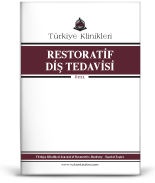Diş çürükleri çok yaygın bir hastalıktır. İlerlemesi hâlinde diş dokusunun kaybına yol açar ve tedavi daha zor, maliyetli bir hal alır. Hatta bu durum dişin kaybına kadar gidebilir. Bu durum; insanların günlük hayatını olumsuz etkilemesinin yanında, ülke ekonomisine de zarar verir. Oysaki koruyucu yöntemler ile çürüklerin oluşumu engellenebilir, yeni başlamış çürüklerin onarılması sağlanabilir, diş eti sağlığı korunabilir. Koruyucu önlemlerin başında; uygulanışı kolay, ucuz, ulaşılabilir olması gibi çok sayıda olumlu yönleri nedeniyle 'Diş Macun ve Kremleri' gelmektedir. Diş macunlarının temel içeriklerinin yanında, değişen aktif bileşenleri bulunur. Hastalarımıza ihtiyacı olan diş macununu önerebilmemiz için içeriklerini ve bunların etki mekanizmalarını çok iyi bilmemiz gerekir. Çok sayıda diş macunu bulunmaktadır. Bu durum çoğunlukla akıl karıştırıcı olabilmektedir. Diş hekimi, bilgi eksikliğinin olmaması hâlinde hastalarını doğru yönlendirebilir. Diş hekimleri diş macunları ile ilgili bilimsel araştırmaları yakinen takip etmeli, gelişmelerden haberdar olmalıdır. Hastasının ihtiyacına uygun olanı belirlemek, ancak detaylı bir anemnezin ardından klinik ve radyolojik değerlendirme sonucunda mümkündür. Aksi takdirde hastaların raflardaki diş macunlarının içinden kendi ihtiyacı olanı bulması çok zordur. Çoğunlukla maliyet, ambalaj ya da medya reklamları gibi özellikler belirleyici olmaktadır. Hem uygun diş macunun belirlenmesi hem de doğru kullanılması, istenilen olumlu etkinin elde edilmesi için önemlidir. Bu nedenle diş hekimleri tarafından reçetelendirilmesi en doğru yoldur. Günümüzde bitkisel/doğal içerikli ürünlere talep artmıştır. Ancak yeterli bilimsel çalışma olmayan, etkinliği kanıtlanmamış ürünlerin kullanılması konusuna şüphe ile yaklaşmalı, hastalarımızı yanlış yönlendirmemeye özen göstermeliyiz. Diş macunları konusunda bilgi eksikliğimiz olmazsa, hastalarımızın 'hangi diş macununu kullanmalıyım?' sorusuna 'ne istersen kullan' gibi yüzeysel cevaplar da vermeyiz. Tabii ki en başta gelen fırça ve macun kullanımıdır. Ancak bunun ötesinde daha detaylı yönlendirmeler ile hastalarımızın ağız ve diş sağlığını en üst seviyede korumak da esas görevimiz olmalıdır. Diş macunu ve diş fırçasının ayrılmaz bir bütün olduğunu, fırça kullanımı ile yapılan mekanik temizliğin, istenilen ağız ve diş sağlığının temininde tek başına yetersiz kalacağını bilerek doğru diş macunu seçimi konusunda hastalarımızı yönlendirmeliyiz.
Diş macunu bir lüks değildir. 'Macunlama'; diş ve diş eti sağlığının korunması, hastalıklarının durdurulması hatta gerilemesinde diş hekiminin tedavilerine destekleyici etki gösteren önemli bir tedavidir.
Kitabımızın, meslektaşlarımıza, mesleğe yeni başlayan genç akademisyenlerimize, öğrencilerimize klinik açıdan katkıda bulunmasını diler, kitabın hazırlanmasında makaleleriyle büyük katkıda bulunan değerli yazarlarımıza ve emeği geçen Türkiye Klinikleri yayın ekibine teşekkürlerimi sunarım.
Saygılarımla.
Prof. Dr. Dilek ARSLANTUNALI TAĞTEKİN
Editör
Dental caries is a very common disease. Due to its progress, it causes the loss of dental tissue, which makes the treatment become more difficult and costly. This situation can even lead to the loss of the tooth. Meanwhile this not only negatively affects the daily life of people, but also damages the country's economy. However, with preventive methods, the formation of caries can be controlled, new caries can be repaired, and periodontal health can be protected. 'Toothpaste and Creams' are the leading preventive measures due to their many positive aspects such as its easy applicability, cheapness and accessibility. Besides the basic ingredients of toothpastes, there are varying active ingredients. In order to be able to recommend the toothpaste our patients need, we need to know the contents and their mechanism of action very well. There are numerous kinds of toothpaste. This situation can often be confusing. The dentist can guide his patients correctly if only they do not have any lack of information. Dentists should follow up the latest scientific researches on toothpastes and should be aware of developments. To determine the appropriate one for the patient's needs is only possible with a detailed anamnesis, clinical and radiological evaluation. Otherwise, it is very difficult for patients to find what they need from the toothpaste on the shelves. Generally, features such as cost, packaging or media advertisements are the determining factors. Both determination of the appropriate toothpaste and its correct use are important for obtaining the desired positive effect. For this reason, the most correct way for toothpastes are to be prescribed by dentists. Today, the demand for herbal/natural products has increased. However, we should be skeptical about the utilization of products that do not have sufficient scientific studies and proven efficacy, and we should pay attention not to mislead our patients. If we do not have lack of knowledge about toothpastes, we will not be giving superficial answers such as 'use what you want' to the question 'which toothpaste should I use?' that our patients ask. Of course, the foremost is the use of brush and paste. However, beyond this, it should be our main duty to protect the oral and dental health of our patients at the highest level with more detailed instructions. Knowing that toothpaste and toothbrush are inseparable and that only mechanical cleaning with the use of a brush will be insufficient in providing the desired oral and dental health; we should guide our patients in choosing the right toothpaste.
Toothpaste is not a luxury. 'Paste' is an important treatment that has a supportive effect on the dentist's treatment in the protection of tooth and gum health, stopping or even regressing diseases.
I hope that our book will contribute clinically to both our colleagues and our young academicians who are new to the profession. I offer my special thanks to our dear authors, which had major contributions with their articles and to staff of 'Türkiye Klinikleri'.
Best regards.
Prof. Dr. Dilek ARSLANTUNALI TAĞTEKİN
Editor







.: Process List